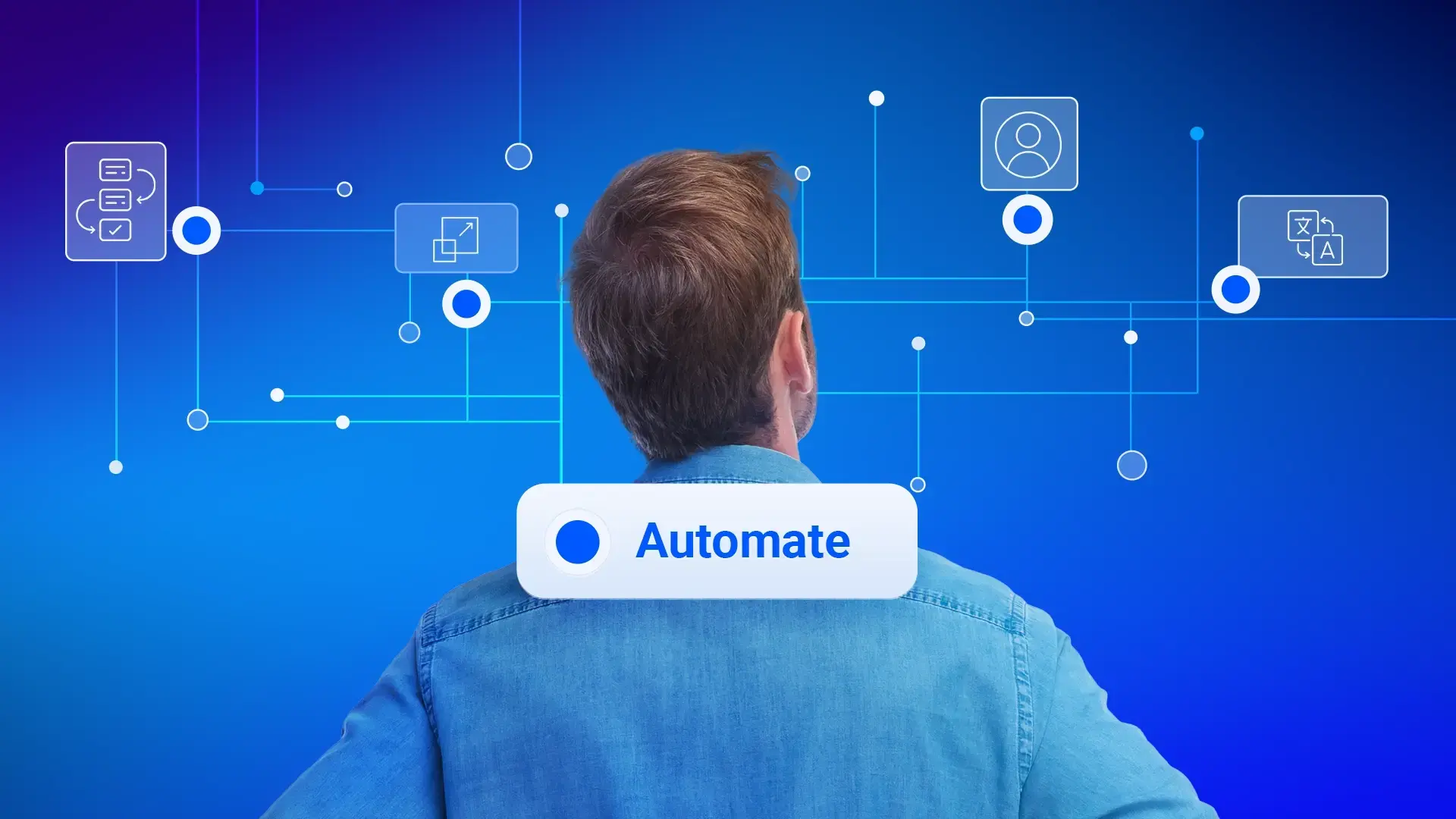AI and marketing have become two sides of the same coin in 2023, with technology-driven marketing strategies revolutionising the way businesses interact with consumers.
In today's digital marketing landscape, Generative AI has emerged as a critical tool in enhancing efficiency and driving engagement. Marketing teams are now looking at how they can harness AI's potential in numerous ways, from leveraging predictive analytics for more informed decision-making, to automating content generation for improved relevancy and personalisation.
Generative AI has truly transformed the marketing landscape, offering exciting possibilities to enhance information sharing and deliver personalised experiences to users. It's fascinating to witness how marketing teams are leveraging the power of generative AI to revolutionise various aspects of their industry, optimising internal processes and crafting unforgettable customer journeys.
The Generative AI phenomenon is swiftly gaining momentum amongst the giants of the tech industry as well, drawing attention from Wall Street. Companies such as Google, Microsoft, Meta, and Amazon are in a race against time to incorporate their top-tier models into as many products as they can.
Let’s take a look at how these companies have historically worked with AI and the new ways they are incorporating the technology into their existing and new products, as well as what it means for marketers.
Microsoft
Microsoft has a rich history of incorporating AI technology across various domains. The Microsoft Cognitive Services, a collection of AI-powered APIs, enables developers to integrate advanced features into applications. These services cover vision, speech, language, knowledge, and search capabilities, facilitating tasks like image and speech recognition, as well as natural language understanding.
Microsoft has also integrated AI features into Office 365, enhancing productivity in applications like PowerPoint, Word, and Excel. PowerPoint, for instance, assists users in creating compelling presentations by suggesting slide layouts, generating SmartArt graphics, and offering design recommendations.
Most recently, Microsoft's collaboration with OpenAI resulted in the development of CHATGPT, an impressive generative AI model that pushes the boundaries of AI research and innovation. This partnership demonstrates Microsoft's commitment to pushing the boundaries of AI research and innovation but can also be credited as the spark that lit the generative AI flame and buzz, we are seeing in the industry today.
Microsoft is incorporating OpenAI technology into its novel AI-driven search engine, Bing, heralding a new era in the digital advertising landscape.
The tech giant has been in conversations with ad industry players, plotting a roadmap to monetise the search engine in a bid to rival Google's supremacy in the space. Recently, Microsoft unveiled a tantalising glimpse of Bing's capabilities to an influential ad agency, with ambitious plans to permit paid links within search results.
At the heart of Bing's novelty is its pioneering generative AI technology, geared to produce uniquely human-like answers to open-ended questions. The intent is clear - Microsoft is hoping that the conversational tone and feel of Bing's AI chatbot responses will pull in more users, subsequently attracting a larger pool of advertisers.
The nascent version of Bing's AI chatbot is undergoing rigorous trials, accessible to a limited user base. Microsoft's innovative strategy sees traditional search ads being woven seamlessly into responses generated by the Bing chatbot. They are also considering a specialised ad format for the chatbot, tailored to advertisers within specific sectors. For instance, a user query such as "what are the top-rated hotels in Mexico?" could trigger relevant hotel ads.
In an ingenious move, Microsoft plans to integrate ads within Bing's chatbot interface that could potentially occupy prime real estate at the top of the search page. This could prevent ads from being relegated to less visible parts of the page.
The anticipation for Bing's new offering is palpable, with a waitlist that stretches into the millions, offering Microsoft a promising opportunity. The company estimates that each percentage point of market share it secures in the search advertising space could net an additional $2 billion in ad revenue. Microsoft's own Edge web browser, equipped with Bing search, currently enjoys a global market share of less than 5%.
The groundbreaking announcements from both Microsoft and Google mark the most significant shift in the search industry in two decades.
While Microsoft is in the process of experimenting with ads on the trial version of the Bing chatbot, it has not yet shared a timeline for when brands can directly purchase ads within the chatbot. The potential for AI in advertising is just beginning to be unveiled, and Microsoft is committed to collaborating with its partners and the broader ad industry to explore this emerging frontier.
Amazon
With AI being an integral part of its operations, Amazon has been successfully pushing the envelope. Alexa, Amazon's popular voice-activated assistant, leverages machine learning and natural language processing to understand and respond to user queries, even handling tasks like product ordering or smart home device management. Their groundbreaking Amazon Go stores have eliminated the need for human cashiers, using machine vision and sophisticated algorithms to monitor customer selections for a seamless shopping experience. Also noteworthy is their product recommendation system, an AI gem that expertly predicts potential future purchases by analysing user behaviour.
In a strategic move to compete with industry heavyweights Microsoft and Google, Amazon is assembling a specialised team with a focus on artificial intelligence (AI). This team's mission is to devise advanced AI tools capable of automating video and image creation for advertisers leveraging Amazon's platform. These AI-infused products will empower merchants to produce rich media content aimed at advertising.
This initiative signals Amazon's ambition to broaden its business reach. The forthcoming service will benefit merchants using a variety of Amazon platforms, including Amazon Fresh, Amazon Music, and Freevee. Additionally, the service will encompass audio and visual advertising tools, specifically designed to optimise search result performance.
In prioritising this new business venture, Amazon is taking note of key competitors Google and Meta, who have been investing in similar Natural Language Processing (NLP) projects for their platforms. Microsoft is also exploring the potential of AI in advertising, with trials of AI ads on their Bing chatbot. In further pursuit of AI innovation, Amazon is considering the use of AI tools to craft personalised product descriptions.
Amazon's latest initiative doesn't stop at AI for advertising. The company also plans to incorporate advanced AI tech into Alexa, its voice assistant. Amazon is currently developing a Generalised Large Language Model (LLM), distinguishing itself from Microsoft's Bing, which uses the OpenAI model.
This project aims to enhance Alexa's monetisation potential by enabling tailored suggestions, interactive video searches, and innovative story-telling capabilities. This move to fortify Alexa comes amidst significant layoffs within the company, particularly within teams working on Alexa and other significant hardware products.
Since its launch in 2022, ChatGPT has gained considerable traction in the AI market. Given the immense interest surrounding AI, it's not surprising that Amazon is integrating LLM-based improvements into its service offerings.
Meta, on the other hand, has traditionally employed machine learning to predict user interests. A deep analysis of users' likes, the likes of friends, and location data helps Meta serve personalised content, such as those offered through Facebook Watch. Beyond just content recommendations, the scope of Facebook's predictive capabilities extends to predicting future behaviours like product purchase tendencies, a vital insight for advertisers.
This year in keeping up with their competitors , they have unveiled an exciting new tool for advertisers dubbed the AI Sandbox. Labelled by Meta's executives as a 'creative laboratory,' the AI Sandbox encompasses capabilities aimed at streamlining operations in three key fields: copywriting, visual asset production, and image editing. This is the most recent AI innovation from the tech giant.
Meta has shared that a 'select group' of advertisers are the first to explore the AI Sandbox, with broader access anticipated for July this year. The platform will also be seamlessly integrated with Meta's existing offerings.
AI Sandbox presents a range of smart features, designed with the intent to simplify advertisers' lives while driving cost efficiencies.The first offering, Text Variation, is sure to have copywriters celebrating, this tool lets advertisers generate multiple renditions of a piece of written content, each uniquely crafted for a distinct audience segment – all the while ensuring consistency with the core brand message.Background Generation, the second feature, is designed to generate background imagery from just a few text cues. Not only can this tool expedite the creation of diverse creative elements for campaigns, but it's also likely to come in handy for A/B testing and various aspects of UX product design.
Lastly, Image Outcropping is set to be a real game-changer by automatically adjusting visuals to the optimal aspect ratio for various social media formats: Posts, Stories, Reels, and beyond.
Google’s investment in AI has been substantial, with a keen interest in deep learning—where artificial neural networks emulate the human brain's information processing capabilities. This interest was publicly acknowledged in 2011 with the Google Brain project, a neural network specifically designed for image recognition. Further commitment to deep learning was demonstrated with the acquisition of DeepMind, the creators of Alpha Go—a powerful machine learning-based competitor for the board game Go. Deep learning underpins several Google services, from natural language processing to user recommendations. TensorFlow, their open-source machine learning platform, allows users to design their own neural network solutions. Additionally, Google's pursuit of self-driving car technology incorporates deep learning algorithms, signifying AI’s vital role in their ambitious autonomous vehicle project.
In recent months, it seems as though Google is sprinting ahead in its quest to incorporate advanced artificial intelligence (AI) technology into its key products, making inroads into the realm of advertising. As per internal documents, Google has given a nod to plans of employing generative AI, bolstered by Large Language Models (LLMs), to automate advertising and ad-supported consumer services.
The tech giant has been experimenting with PaLM 2 for the youth-focused content on YouTube, optimising elements like titles and descriptions. It is also exploring the concept of providing creators with five video ideas based on pertinent topics, using this technology.
Concurrently, Google has been grappling with a period of subdued revenue growth after nearly two decades of consistent, speedy expansion. Anticipation of a potential recession has caused advertisers to curtail online marketing budgets, affecting Google, Facebook, and others.
Google's paid search advertising conversion rates have seen a drop across most sectors this year. Recent news suggests that Google aims to employ generative AI services to encourage increased spending, thereby boosting revenue and improving margins. This could materialise in the form of an AI-driven customer support strategy spanning across a plethora of Google products, including Google Play Store, Gmail, Android Search, and Maps.
Automated support chatbots could offer specific responses in simple, clear sentences, allowing for follow-up questions before recommending an advertising plan tailored to the customer's needs. Google has recently launched Google Duet and Chat assistance, enabling users to employ simple natural language to seek answers to cloud-related queries or receive comprehensive implementation plans for their projects.In addition, the company is developing its own internal product akin to Stable Diffusion for image creation. The technology, comparable to OpenAI’s DALL-E, can swiftly produce images in various styles based on user-supplied text.
On May 23rd, Google unveiled new technologies for advertisers at its annual event, Google Marketing Live with AI innovation at the core of the announcements, showcasing how seriously the company is taking AI and its expectation for AI-powered ads solutions to help multiply marketing expertise and drive powerful business results in today’s changing economy
Conclusion
With all the advertising platforms looking at incorporating this technology into their offerings, there is no doubt that Generative AI, will play a huge role in the future of digital advertising, Omnicom a giant in the advertising industry has communicated to their clients that conversational AI may be the driving force of online search in the future, mentioning that these latest updates from Google and Microsoft are the most significant shift in the search industry in two decades.
Whilst AI has its issues, it is hard to deny the potential that these proposed updates pose for the industry in the way they can provide marketers with more time and opportunities to look at the bigger picture. We are certainly excited for the opportunities that advances to AI technology holds for the future of advertising.








